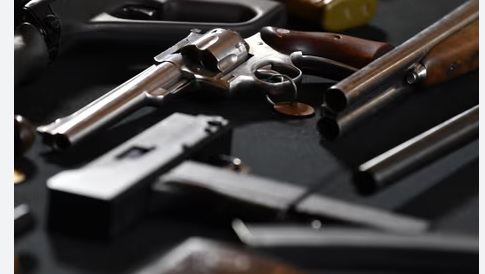Understanding the National Firearms Act (NFA): Key Components Explained
The national firearms act (NFA) of 1934 appears as the most significant items of legal guidelines inside the world of firearm control in the United States. Introduced in reaction to gangland physical violence throughout the Prohibition time, the NFA was created to control certain types of firearms and accessories considered particularly risky or inappropriate for civilian use. Here is what you ought to understand about the NFA:
1. Roots and Objective:
The NFA was passed in reaction for the growing physical violence linked to arranged criminal offense throughout the 1920s and early 1930s, particularly the use of firearms such as unit pistols, simple-barreled rifles and shotguns, and silencers by bad guys. Its major intention ended up being to control and tax the exchange and creation of these certain kinds of firearms and extras. By imposing rigid regulations and big taxation, legislators hoped to curb their availability and deter illegal action.
2. Governed Firearms and Devices:
The NFA imposes regulations on many groups of firearms and gadgets, including:
Unit firearms: Fully auto firearms capable of firing numerous rounds by using a one draw in the induce.
Short-barreled rifles (SBRs): Rifles with barrels shorter than 16 inches or overall measures quicker than 26 in ..
Brief-barreled shotguns (SBSs): Shotguns with barrels smaller than 18 ins or general measures shorter than 26 ins.
Suppressors (silencers): Units attached to firearms to reduce the noise of gunfire.
Dangerous products: A number of explosives, bombs, grenades, and enormous-quality firearms not suitable for sporting uses.
3. Agreement and Polices:
To own or exchange an NFA-controlled weapon or product, people and entities have to conform to rigorous restrictions. This consists of paying out a tax stamp for each and every piece, having an extensive track record check out, and acquiring endorsement from your Bureau of Alcoholic drinks, Tobacco, Firearms and Explosives (ATF). Moreover, any shift of these things must be documented and claimed towards the ATF.
4. Effect and Controversy:
The NFA has had an enduring effect on handgun legislation in america. While proponents reason that it will help stop the proliferation of risky weapons and minimizes gun-connected crime, pundits often report it as a an infringement on 2nd Amendment legal rights and debate that it disproportionately influences regulation-abiding gun owners. Over time, there has been discussions and authorized obstacles all around the constitutionality and performance of the NFA.
In summary, the National Firearms Act of 1934 continues to be a cornerstone of handgun control in the United States. By imposing tough regulations and taxation on certain kinds of firearms and extras, it aims to balance open public security concerns with Next Amendment rights. Being familiar with its provisions and consequences is vital for anybody active in the ownership, transfer, or creation of NFA-governed things.
